Cake is one of life’s simple pleasures. It’s present at special celebrations, morning commutes, afternoon slumps and more, where it offers up a slice of indulgence frosted with happiness.
And, despite concerns around health, its presence in our daily lives is seemingly growing as consumers recognise the wide-ranging benefits of a little treat.
“As we place a stronger emphasis on mental health and wellness, consumers have increasingly changed their perceptions of sweet goods,” says Jacqui Passmore, marketing lead West EU & AMEAP at Dawn Foods. “So, enjoying something sweet every day has gone from ‘something I feel guilty about’ to ‘something that makes me feel good’.”
What’s more, the ever-expanding world of cake also offers bakers of all shapes and sizes the opportunity to flex their creative muscles as they seek to create crowd-pleasing baked goods.
So, what are the cake trends set to make consumers feel happy in 2025 and beyond?
Flavour bombs
Cakes need to pack a punch when it comes to flavour. It’s no surprise then that flavours are becoming bolder – with sour, salty, and even spicy notes coming through.
Traditional flavours such as vanilla, chocolate, lemon and the like remain fan favourites, but those looking for something new and exciting are being presented with a wider variety of options. Rising cocoa prices also mean bakers are looking to utilise other ingredients.
Pistachio is an on-trend flavour successfully bridging the gap between classic and exciting. “Pistachio is a flavour to watch that we’ve spotted in lots of artisan bakeries. It was already growing, but we are seeing a new lease of life for this one as it ticks a lot of boxes with intriguing colour and taste profiles,” explains Liz Gabriel, from bakery specialist flavour supplier I.T.S. It’s often paired with white chocolate – another flavour on the rise – rose or raspberry, which breaks through the richness.
Waitrose, for example, added a Pistachio Tiramisu to its No.1 own-label range as part of a recent revamp, while Leeds-based bakery Get Baked offers Pistachio Brownies made with Sicilian pistachio cream. London-based sweet treat specialist Cutter & Squidge is also serving up a Passionfruit & Pistachio cake complete with freeze-dried raspberries and white chocolate pearls.
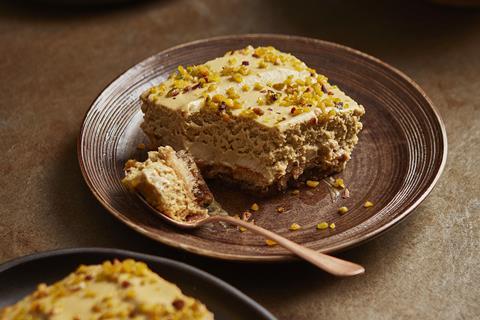
Venturing into more adventurous territory sees familiar ingredients but turned up to the max.
“We all know that lemon is a timeless flavour, but with the rise of the ‘sour power’ trend, why not try introducing something a little different such as guava or soured plum and cherries?” suggests Lawrence Watson, managing director of ingredients supplier Kluman & Balter. “Talking of timeless, ginger and cinnamon continue to be popular spices in bakery, but we’re seeing a rise in demand for something a little hotter! Chilli-chocolate and spice is a hot trend in more ways than one.”
Sour cherries, rhubarb, sea buckthorn, and cranberries are among the sour ingredients highlighted by Sarah Sharples, food innovation manager at Asda, who notes that they are often paired with citrus for even more of a sour hit.
“There is also experimentation with umami, salty, sour, smoky, bitter and herbaceous,” she adds. “We are seeing an increase in herbs being used, such as fennel (on a custard tart), basil, bay and sage used with citrus and custard. Asian ingredients are also experimented with such as soy, miso, and even fish sauce in a caramel for a salty savoury flavour boost. Olive oil, lemon oils, and herbs added to custards and cheesecake batters – all blurring the lines between sweet and savoury.”
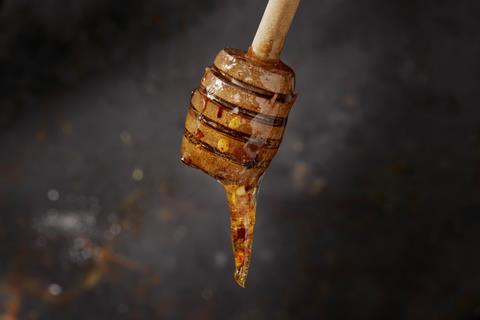
Miso was among the ingredients in a recent launch by M&S – a Brown Sugar & Salted Caramel Cake which featured salty/sweet miso buttercream.
It isn’t the only Asian ingredient to find favour. Sue Gwilliam, innovation development manager at The Compleat Food Group, believes “we will see continued interest in Asian and Japanese flavour profiles” pointing to “yuzu buttercream, miso and caramelised apple sponges, hot honey drizzle cakes, and maple bacon cupcakes as well as matcha, earl grey and jasmine infused sponges” for ways in which operators will be experimenting with the Eastern flavours.
Hybrid theory
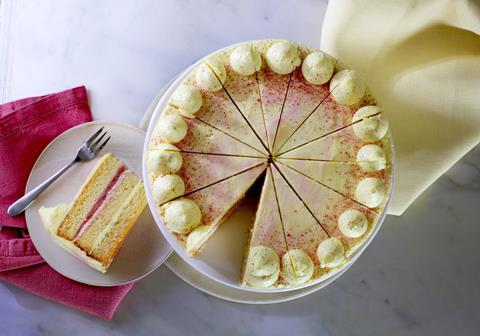
Is it a dessert? Is it a cake? No, it’s a hybrid. Hybrid baked goods might not be new but the way in which the lines are being blurred between cakes and desserts is. They also play perfectly into the nostalgia trend with classic dessert flavours being embraced in new formats.
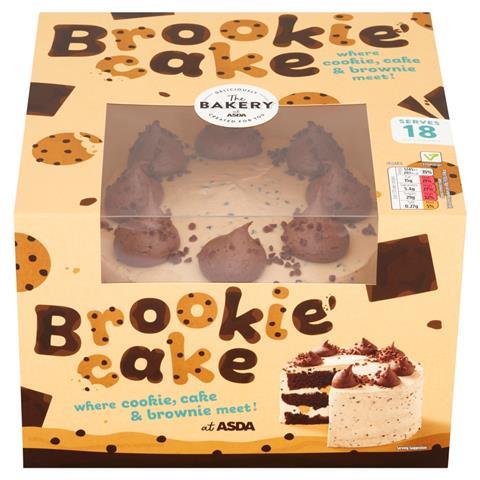
“Striking the balance between familiarity and novelty are mash ups and hybrids – bringing formats together to create something new,” explains Sarah Sharples, food innovation manager at Asda. “Retro desserts such as Tiramisu and Eton Mess are still favourites for mash ups, but also a love of classics served traditionally like knickerbocker glory and Victoria sponge are popular.”
Cookie Dough Biscuit Cupcakes, Battenberg Cupcakes, Brookie Cake, and Victoria Sponge Celebration Cake (which proudly declares ‘the classic with a twist’ on pack) are among the examples of this trend in the retailer’s own-label line-up.
Tesco, meanwhile, has added limited-edition, dessert-themed cakes to its Finest range. This includes a decadent Tiramisu Cake featuring a chocolate sponge layered with coffee buttercream and chocolate sauce, decorated with buttercream and a cocoa powder dusting, as well as an Apple & Blackcurrant Crumble Cake with apple sponge and blackcurrant jam, and a Sticky Toffee Cake.
Even Pladis has got in on the action with limited-edition McVitie’s cake bars rolled out for summer in suitably bright flavours of Eton mess and lemon meringue variants.
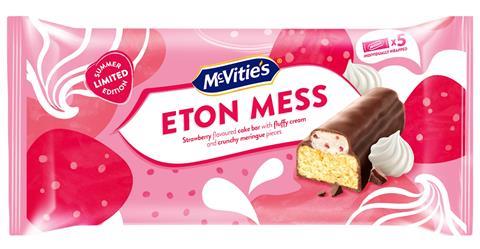
Gabriel at I.T.S refers to this trend as “newfound nostalgia”, pointing to confectionery flavours such as sherbet or candy floss as options away from classic desserts. “This hybrid concept really helps in invoke interest in the cake category and is a real driver to purchase, particularly from younger consumers who are keen to experiment with new ideas,” she adds.
Away from the retailers, expect more experimentation in toppings which draw from desserts such as “torched meringue and crème brûlée”, according to Compleat’s Gwilliam. London bakery Bread Ahead has famously embraced the latter as part of its doughnut range, attracting huge audiences both on and offline – something other bakers are undoubtedly taking note of.
TikTok… it’s decoration o’clock

Looks aren’t everything but in the world of bakery they can be the difference between being devoured and being left on the shelf. Even more so in an age dominated by social media.
“Social media continues to drive this trend for visually stunning cakes – especially wedding and celebration cakes,” explains Jacqui Passmore at Dawn Foods. “Fashion and baking now go hand in hand too with specialist cake creators such as @bakesby.olivia and others having their vintage-style buttercream-piped cakes featured in magazines such as Grazia and The Stylist to appeal to young fashion-conscious consumers.”
“Vintage-style piping is seeing a comeback, especially for celebration cakes”
Watson at Kluman & Balter concurs that “vintage-style piping is seeing a comeback, especially for celebration cakes”. “We’ve seen operators mix bright and bold pinks, blues and orange with more pastel tones to style their bakes,” he adds.
Sussex family-run business Truffles Bakery is among those to tap into this trend, noting that it can be adapted to suit most colour schemes offering further room for experimentation. Recent examples highlighted on the firm’s Facebook page include a white ‘Just Married’ version, a black frosted gothic version with bright red cherries for a pop of colour, and a pastel-hued Care Bears version.
Soft textures and shapes – often evoking indulgence and generosity – are becoming increasingly popular in the cake category, highlighting a move away from the likes of naked and geode cakes.
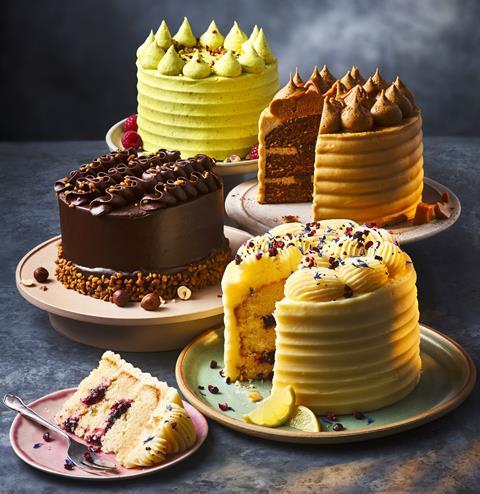
For example, a recent range of celebration cakes from M&S, inspired by artisan bakeries, feature lashings of thick buttercream all around with even more artistically piped on top.
Some of this is likely driven by how lavish they look on social media. Bigger decorations and stacks of layers provide a more impressive pay off online. As Sharples from Asda explains: “Video is the new photo on social media so products with joyful bright colours are in favour, as well as those with a dynamic element such as a ‘squishable’ gooey filling, layers, and hidden centre.”
Taking this to the max are the likes of Get Baked in Leeds and Lancashire’s Studio Bakery, which have both found success online with creations inspired by the Bruce Bogtrotter chocolate cake from Roald Dahl’s Matilda. Get Baked’s latest iteration, called Bertha, features 24 layers of indulgent chocolate sponge and milk and dark chocolate ganache.
What’s on the inside of these behemoths may be predictable, but they’re still a sight to behold. And it’s often the spectacle that keeps people watching.
“Cakes which offer a fun surprise when cut open, like our Rainbow cake and Pinata cake, are in high demand for celebrations due to their ‘wow factor’, an essential element in today’s social media-driven world,” adds Richard Fowler, head of cake business Sponge.
Limited edition, maximum traction
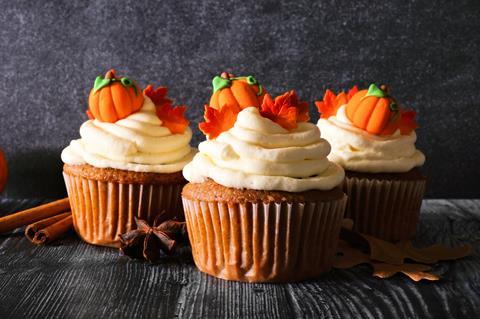
Limited edition cakes, often tied to seasonal events, help create excitement among customers throughout the year and increase revenue for bakers.
“Seasonality is also a strong consumption driver for consumers in general and younger consumers in particular as it’s perceived as delivering choice, newness, as well as a more sustainable way of eating,” believes Anthony Saison, head of category insights & customer marketing at Mademoiselle Desserts.
They “play their part in driving traffic to the bakery counter and increasing sales per visit”, says Dawn Foods’ Passmore. What’s more, they can help “create a deadline” to spur on purchases as well. She uses the firm’s peach melba and Black Forest flavour frostings as examples of how the supplier is helping bakers tap into seasonal trends.
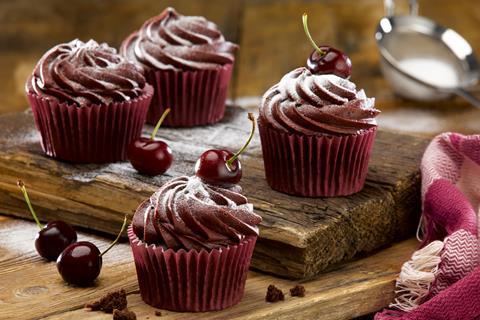
A weekly or monthly special offers bakers the opportunity to take advantage of shorter trends or fads driven by social media as well as utilising seasonal ingredients and local produce.
The latter, says Fowler from Sponge, taps into the “growing movement towards cakes made with local, handmade, and simple ingredients, with a focus on health-conscious choices and seasonal flavours”. “Vanilla and lemon take the spotlight in spring while richer flavours like toffee and walnut are preferred throughout autumn,” he says. “Brownies are a winter staple, offering warmth and comfort, while lighter, fruity cakes such as lemon take centre stage in the summer.”
The healthy cake paradox
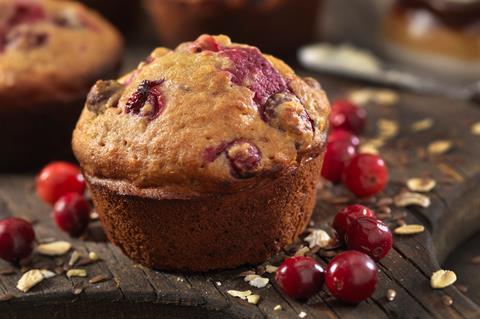
Consumers are complex creatures with constantly evolving needs and desires. This has led to several paradoxes in the cake world, most notably when it comes to health.
Deserved indulgence, the feeling that you deserve a treat for one reason or another, is the number one consumption driver for young consumers ordering sweet bakery and desserts, according to Saison at Mademoiselle Desserts.
“This need for indulgence is contributing to the rise of some current trends in the cake arena such as the growing interest in cream cakes or tall multilayered fudge cakes,” he explains. “And yet, the same consumers strongly express a need for healthier food options.
“While it’s hard to make sweet bakery healthy, and probably irrelevant anyway – according to Mintel, seven out of 10 consumers say they’d rather eat a smaller amount of standard cake than a larger amount of a healthier cake – there are ways to make cakes better for you.”
This includes “cleaning ingredients lists” to reduce the number of additives and preservatives and adding in more nutritious ingredients such as fruit, vegetables, grains, and seeds.
“Concerns about sugar are still on the agenda and this is also having an impact on the kinds of cakes that bakers are adding into their range”
Reducing calories, fat, and sugar also remains on the agenda – particularly with the news that the new government is forging ahead with advertising restrictions for products high in fat, salt, and sugar (HFSS).
“People are becoming more mindful of sugar intake and are placing greater emphasis on dietary preferences and nutritional content. While it remains challenging to make cakes entirely healthy, consumers are leaning toward options that are baked by hand, made with real ingredients and avoiding ultra-processing,” believes Sponge’s Fowler.
While the HFSS score isn’t based on portion size, the focus on health is seeing manufacturers and suppliers pay closer attention to serving sizes.
“Despite the interest in oversized, overloaded, visually incredible cakes, concerns about sugar are still on the agenda and this is also having an impact on the kinds of cakes that bakers are adding into their range,” explains Dawn Foods’ Passmore. “Smaller sized cakes and mini formats offer consumers the indulgence they are seeking but with limited calories per serving so ensuring that there is no compromise on taste due to sugar or fat reduction.”
Use your loaf (cake)
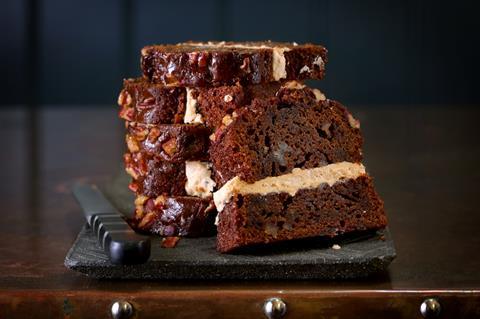
Health conscious or not, the format of a cake makes a big difference to shoppers. Combined with the decoration, it is often a signifier to consumers about the occasion at which to enjoy the cake.
But there is a blurring of the lines as some formats look to muscle in on other’s territory – mostly thanks to innovation when it comes to toppings and decoration.
“When it comes for formats, the bases of cakes will largely stay the same, with some getting bigger to accommodate bigger, chunkier, and more decadent decorations,” notes Gwilliam from The Compleat Food Group. “There will be fewer dainty cupcake selections in 2025, instead more robust formats will take centre stage, including traybakes and loaf cakes.”
Loaf cakes are definitely inviting themselves to more occasions of late as they look to break out of the traditional mould.
“They’ve long been reduced to a basic alternative to classic round cakes minus the excitement,” highlights Saison at Mademoiselle Desserts. “However, by offering a smaller, more convenient proposition, loaf cakes have been benefiting from the struggles of round cakes and have grown in representation recently, growing in turn the amount of innovation in the sub category.”
Loaf cakes are also becoming more elaborate with fillings, rich toppings, and decadent decorations.
The aptly-named LoafMCR is one of the innovators in this space. The Manchester-based artisan bakery has modernised the loaf cake with standout menu items including The Big Birthday Loaf – a vanilla sponge cake dotted with funfetti plus two layers of jam (either blackcurrant & raspberry, strawberry, raspberry, or lemon curd) and then smothered in frosting with more sprinkles and a brightly coloured drizzle on top. It also has many mini loaves on its menu such as a Jammie Dodger Mini Loaf, Vegan Oreo Mini Loaf, and Lotus Biscoff Mini Loaf.
Coffee shops such as Costa are getting in on the loaf cake action with a Pecan Mini Loaf among the new additions for its autumn 2024 menu. It has a black sticky toffee sauce centre and is topped with caramel icing and caramelised pecans. The coffee shop giant has also found success with its Vegan Gingernut Loaf Cake – among the finalists in the Free-From Bakery Product of the Year at the 2024 Baking Industry Awards – which features a sticky ginger cake with ginger frosting and plant-based gingernut biscuits crumbled on top.

Tray cakes are another fast-growing cake category, with notable growth in the coffee shop channel, according to Saison. “Just like loaf cakes, they started out as a smaller, more convenient version of traditional cakes before progressively developing their own style,” he notes, adding that the keywords driving the trend include “rusticity and creativity”.
As such, they’re now available in bars, squares, and triangles, come with or without layers, and with fancy toppings, flavour injections, and more.

This could be seen in abundance at the first-ever Britain’s Best Cake competition earlier this year. The traybake category winner, made by Ginger Bakers, comprised a sponge delicately infused with bay & cardamom which is filled with orange curd and decorated with an orange mascarpone buttercream, topped with glace oranges and edible cornflowers.
ADVERTISEMENT: DAWN FOODS
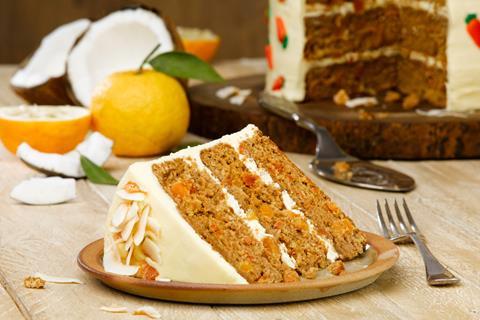
Recipe: Tropical Paradise Cake
Makes an 8-inch, 3-layer cake
Method
Carrot Cake Batter ingredients:
1000g – Dawn® Carrot Cake Mix - American (with carrot)
540g – Water
90g – Dawn® Coconut Compound
150g – Chopped Apricots
- Add all of the ingredients (with the exception of the chopped apricots) to a mixing bowl fitted with a beater. Mix for 1 minute on a slow speed, and then 2 minutes on a medium speed
- Add the chopped apricots and blend into the batter on a slow speed
- Deposit 580g of the cake batter into x3 prepared 8 inch pans
- Bake in a deck oven at 180⁰C for 30-35 minutes.
Cream Cheese & Yuzu Frosting ingredients:
1000g – Dawn® Cream Cheese Frosting
60g – Dawn Exceptional® Compound Yuzu
150g – Icing Sugar (sieved)
- Add all of the ingredients to a mixing bowl fitted with a beater and blend together on a slow speed, and then mix together for 2 minutes on a medium speed. Add additional icing sugar if needed.
Assembly
For decoration – Dobla® Mini Carrots, Toasted Coconut Shavings, Chopped Apricots
- Once the cakes have cooled, layer them together with some of the prepared cream cheese and yuzu frosting
- Apply a thin coat of the frosting to the top and sides, and place in the chiller for 30 minutes
- Then apply a thicker coat of the frosting and make smooth
- Decorate the sides of the cake with the mini carrots. Top the cake with the toasted coconut flakes and a few chopped apricots.



















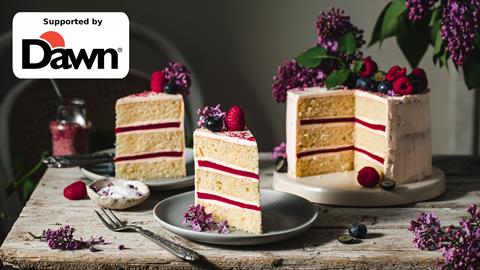
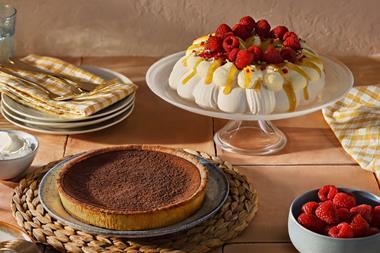
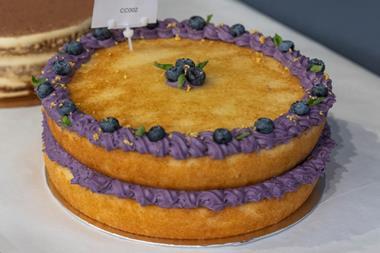
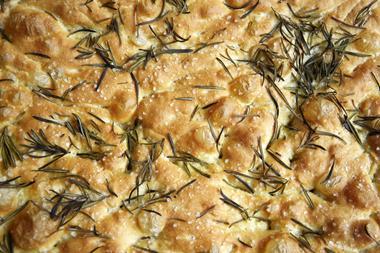





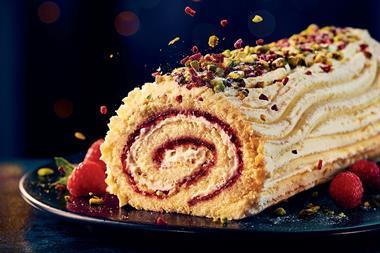

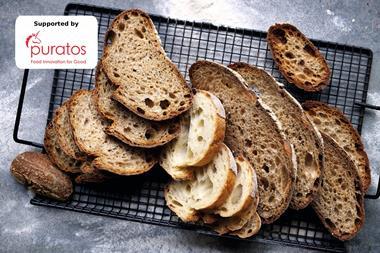


No comments yet